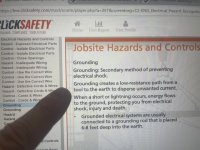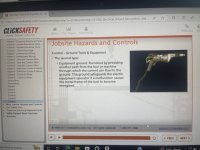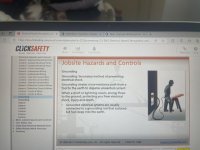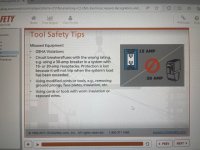Jpflex
Electrician big leagues
- Location
- Victorville
- Occupation
- Electrician commercial and residential
I would like to take a moment to announce my hiring onto a new company. My former occupation as an industrial electrician at a mine site lasted for several years. I spoke with many people on this forum who knew this. However, the mine was shut down due to lack of investor funding around February 2024. With my new job I will be shifting from 3 phase motors to working on large AC/DC inverters 1,500 VDC and related systems.
I will be closer to home serving several cities within my surrounding area and will no longer have to travel 4 hours to work and live on sight all week away from family and wife. I will be assigned a company car (which solves replacing the one I owned which broke down due to commute), phone, tablet, laptop and credit card, full benefits, 401k.
It took me 2 months of going to interviews before landing this. The pay is so much better and I believe for the first time I’ll be able to at least have some funds in the bank for savings and emergency, rather than living per paycheck, thank the Lord!
I was not going to announce this until later or once on site. However, while conducting my safety training, I wanted to present to you all on what OSHA is saying about ground systems see pictures!
Apparently, there is still confusion in the industry and even with OSHA. Apparently, OSHA is saying that grounding power tools and equipment is necessary in order for fault current to be cleared by ground wires, to the grounding rods and into the earth ground where it is “dispersed” LOL
I will be closer to home serving several cities within my surrounding area and will no longer have to travel 4 hours to work and live on sight all week away from family and wife. I will be assigned a company car (which solves replacing the one I owned which broke down due to commute), phone, tablet, laptop and credit card, full benefits, 401k.
It took me 2 months of going to interviews before landing this. The pay is so much better and I believe for the first time I’ll be able to at least have some funds in the bank for savings and emergency, rather than living per paycheck, thank the Lord!
I was not going to announce this until later or once on site. However, while conducting my safety training, I wanted to present to you all on what OSHA is saying about ground systems see pictures!
Apparently, there is still confusion in the industry and even with OSHA. Apparently, OSHA is saying that grounding power tools and equipment is necessary in order for fault current to be cleared by ground wires, to the grounding rods and into the earth ground where it is “dispersed” LOL





